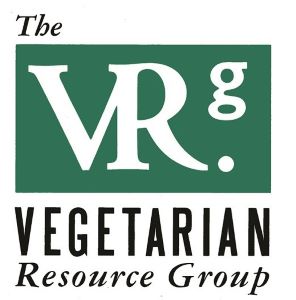The Environmental Impacts of Precision Fermentation: Part 1
By Jeanne Yacoubou, MS
Hailed by its proponents as the sustainable solution to world hunger and the alternative to animal agriculture, precision fermentation (PF) is a technology using microbes to produce recombinant (genetically engineered) proteins in a bioreactor (fermentation tank) without the need for sunlight, soil, a stable climate, or even (in some cases) freshwater.
PF begins by isolating the genetic sequence of a target protein – such as whey or ovalbumin – and inserting it into a microbe’s genome (genetic material). Under the right conditions, the engineered microbes produce a huge quantity of the desired protein which is then separated from the microbial biomass and purified.
In theory, PF as a type of synthetic biology (synbio), could start with the genes from animals, plants, or microbes. For example, Fooditive and Nobell Foods have chosen pea or soy protein as the source of the casein genes to make vegan cheese. But most PF companies today use animal genes to create – what they call – “animal-free” milk, cheese, or eggs.
In this multipart series, The Vegetarian Resource Group takes a closer look at the environmental impacts of precision fermentation used to grow food.
Companies producing animal recombinant proteins
After a careful search for companies using animal genes in precision fermentation, The VRG identified these startups. They produce the animal-based proteins that are then sold in bulk to food and beverage companies.
You may not see the names of these companies on all of the packaged goods you buy. Often on their websites, you’ll find lists or photos of the food products they’re found in. If in doubt, contact the company to confirm.
We have noticed the term “animal-free” on the labels of various “vegan-friendly” – another term these companies use frequently – foods and drinks containing the following recombinant animal proteins. When you see these phrases, think of them as the best indicators that animal genes have been used to make the protein ingredient(s) in the final products you’re considering purchasing.
| Company | Animal Recombinant Protein |
| Liven Proteins | Collagen, gelatin |
| New Culture | Casein |
| Onego Bio | Ovalbumin |
| Perfect Day | Beta-lactoglobulin |
| Remilk | Beta-lactoglobulin |
| The Every Company | Ovalbumin |
| Turtle Tree | Lactoferrin |
Life cycle assessments of animal recombinant proteins
Because precision fermentation using animal genes to manufacture proteins is a new technology, there are not many studies tracking their environmental impacts. We’ve located two articles in peer-reviewed journals that conducted anticipatory life cycle assessments (LCA) of animal-based recombinant proteins compared to animal-derived proteins taken from real animals.
As anticipatory assessments, the LCAs for the PF proteins are hypothetical and based on industrial-scale production. They are not complete assessments, but they provide some useful information about the expected environmental costs of precision fermentation as compared to the environmental impacts of their animal or dairy counterparts.
A 2022 study examined the carbon and water footprints from the production of beta-lactoglobulin, the main protein found in whey consisting of 178 amino acids as noted in a virtual DNA library, in four countries: New Zealand, Germany, United States, and Australia. This analysis concluded that there were no major differences between the carbon and water footprints of animal recombinant protein and those of milk protein derived from real cows. The major reasons for the high environmental impacts of the PF protein were:
- Carbon feedstock (sucrose or glucose) in the microbial growth medium
- Electricity from non-renewable energy sources
A 2021 study conducted an anticipatory LCA for animal recombinant ovalbumin, the major protein in egg whites consisting of 386 amino acids as noted in a virtual DNA library, compared to the chicken egg-derived protein produced in Finland, Germany, and Poland. Non- renewable energy uses were comparable in magnitude for the PF and the chicken ovalbumin production methods. Notably, freshwater eutrophication was much higher for the animal recombinant ovalbumin, likely due to heavy fertilizer use to grow the carbon feedstock (corn or cane sugar).
This study also noted that reusing the microbial biomass waste products as animal feed or fertilizer would lower the environmental impact of the PF process.
Recommendations for animal recombinant protein manufacturers to lower their environmental impacts
Precision fermentation technology, as generally practiced today, is not necessarily less intensive than raising animals for those proteins – although it could be. To make PF more sustainable and possibly replace animal agriculture, companies should:
- Use inedible carbohydrate (lignocellulose) sources such as rice straw as their carbon feedstock instead of glucose or sucrose derived from corn or cane sugar. However, it should be noted that breaking down such plant matter is itself an energy-intensive process that often requires expensive enzymes. Adopting this substitution may lower the land use and freshwater eutrophication effects of PF.
- Rely solely on renewable energy to run the bioreactors and all other processes needed to manufacture the animal recombinant proteins. This modification will reduce the carbon footprint of PF.
- Divert all leftover microbial biomass from the landfill to animal feed or fertilizer. A diversion like this will reduce methane production from the microbial waste products, and, consequently, its global warming potential (GWP).
- Filter and purify all waste water to be reused in the bioreactors.
The contents of this posting, our website and our other publications, including Vegan Journal, are not intended to provide personal medical advice. Medical advice should be obtained from a qualified health professional. We often depend on product and ingredient information from company statements. It is impossible to be 100% sure about a statement, info can change, people have different views, and mistakes can be made. Please use your best judgment about whether a product is suitable for you. To be sure, do further research or confirmation on your own.
To join The Vegetarian Resource Group and receive Vegan Journal, go to www.vrg.org/member

